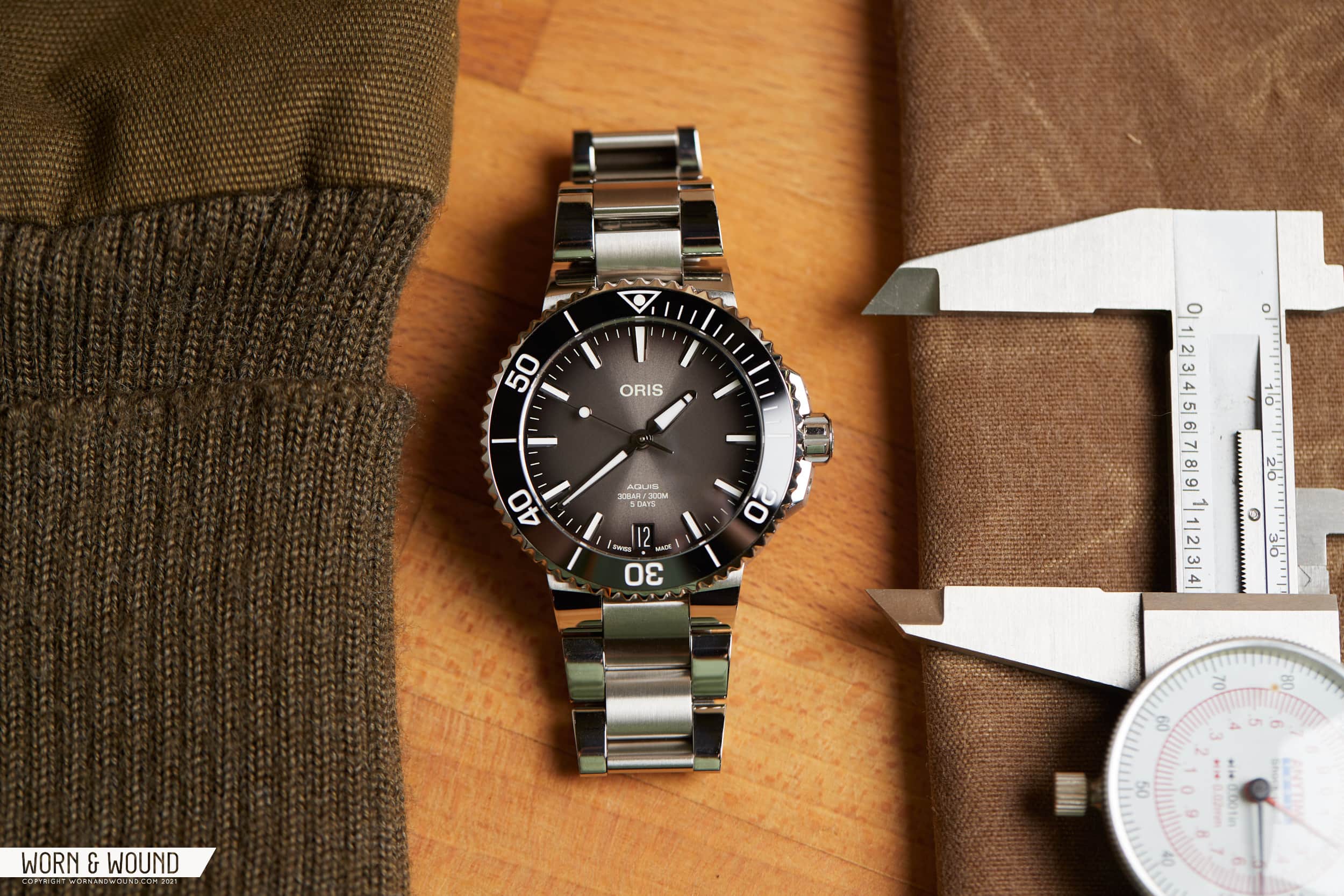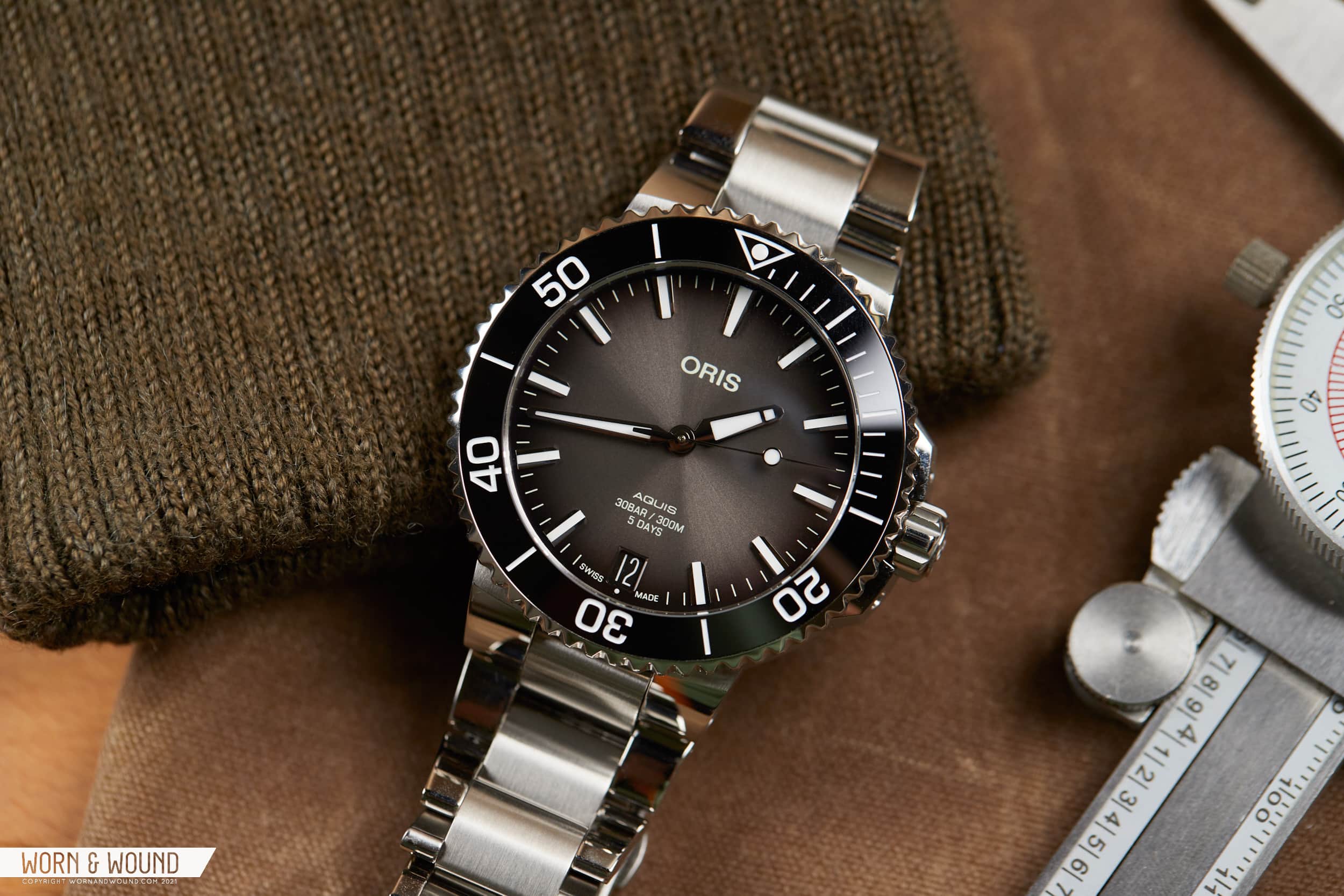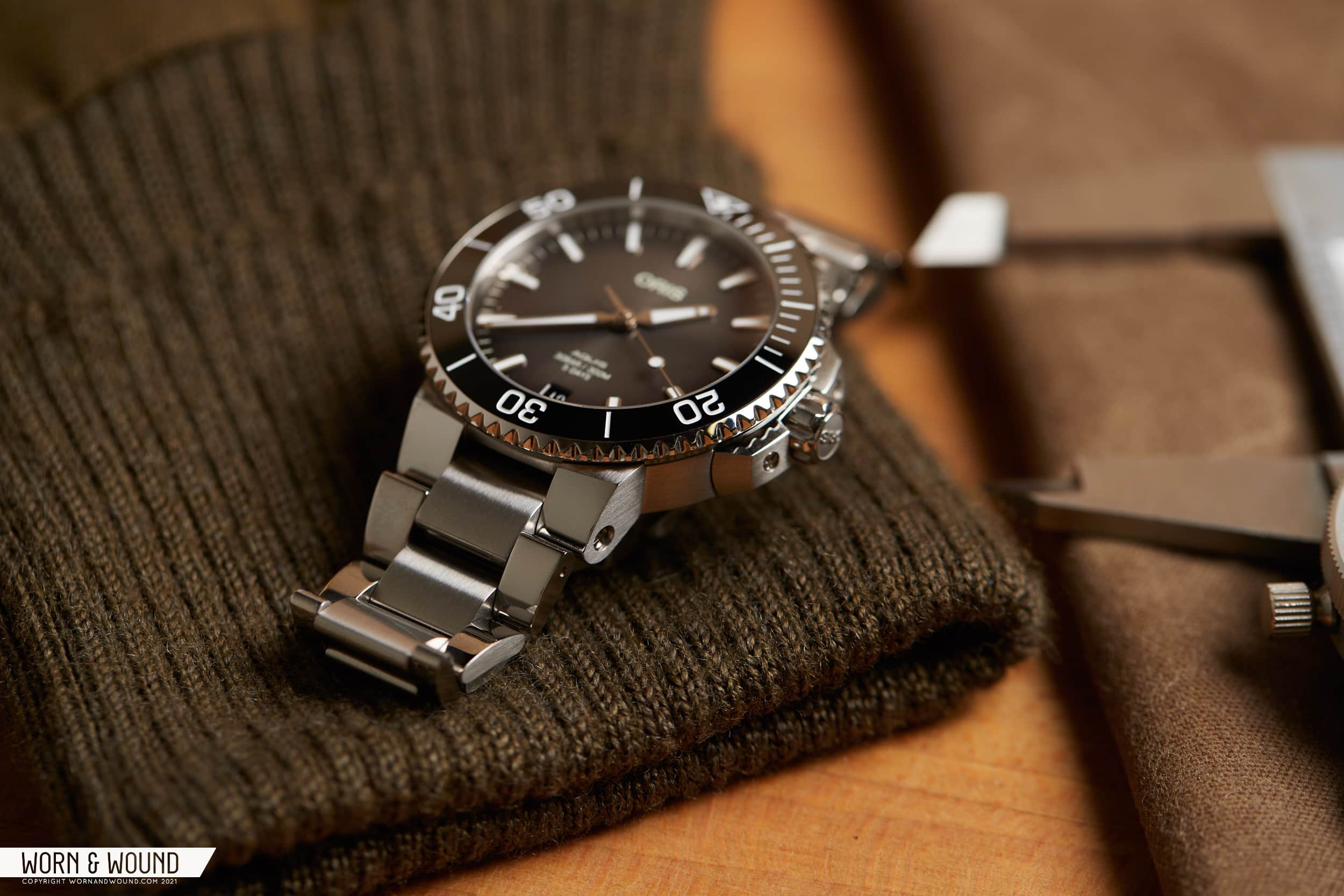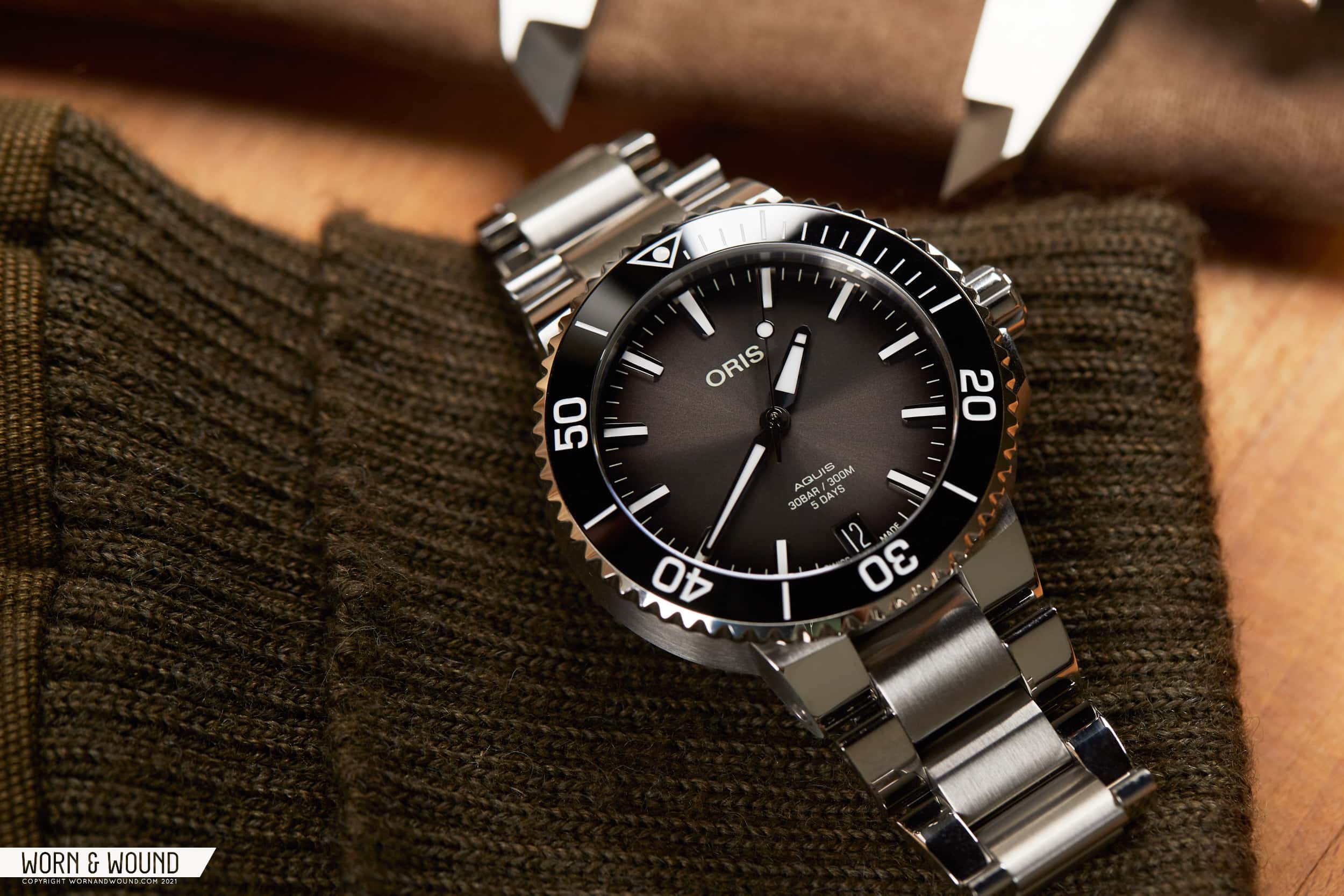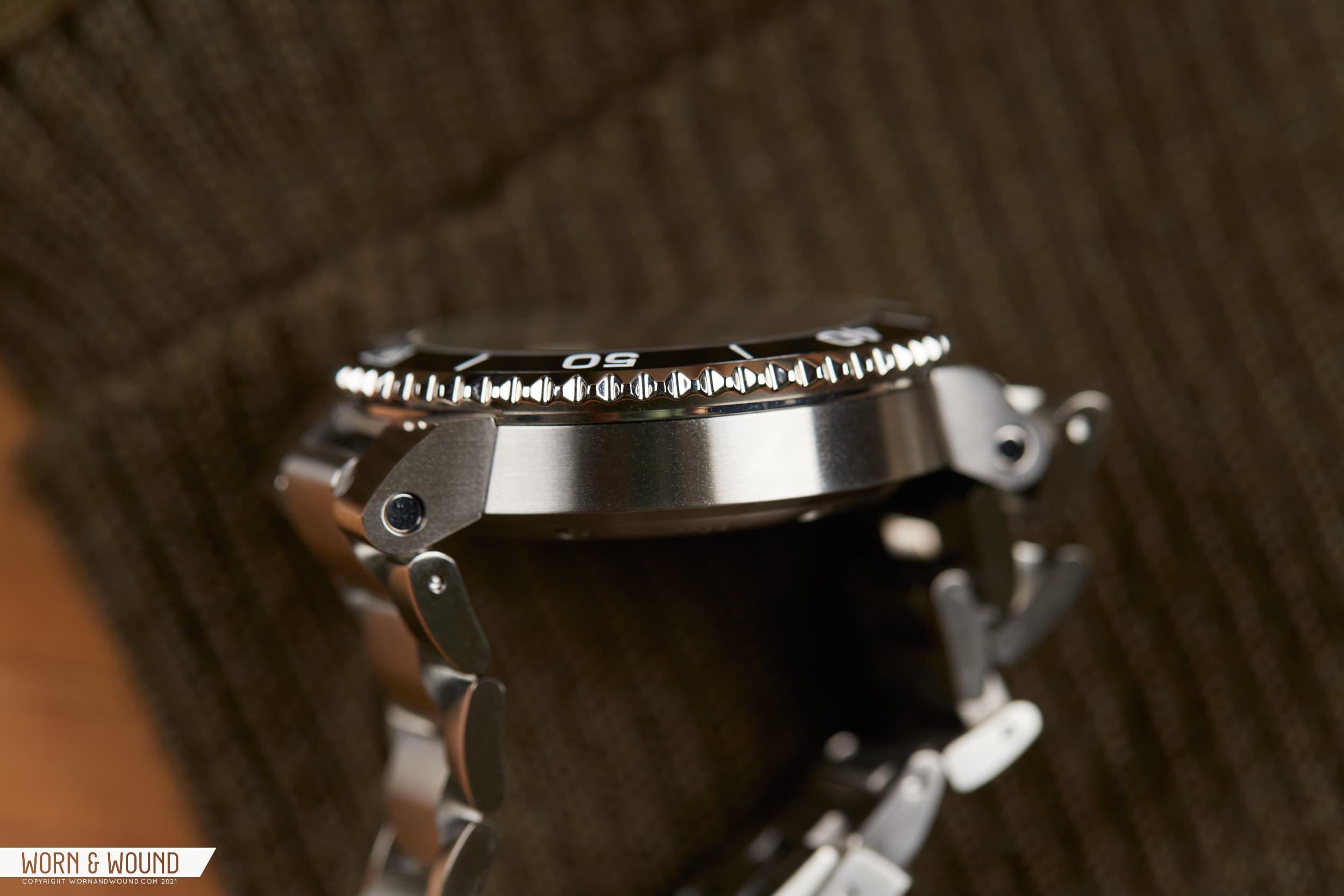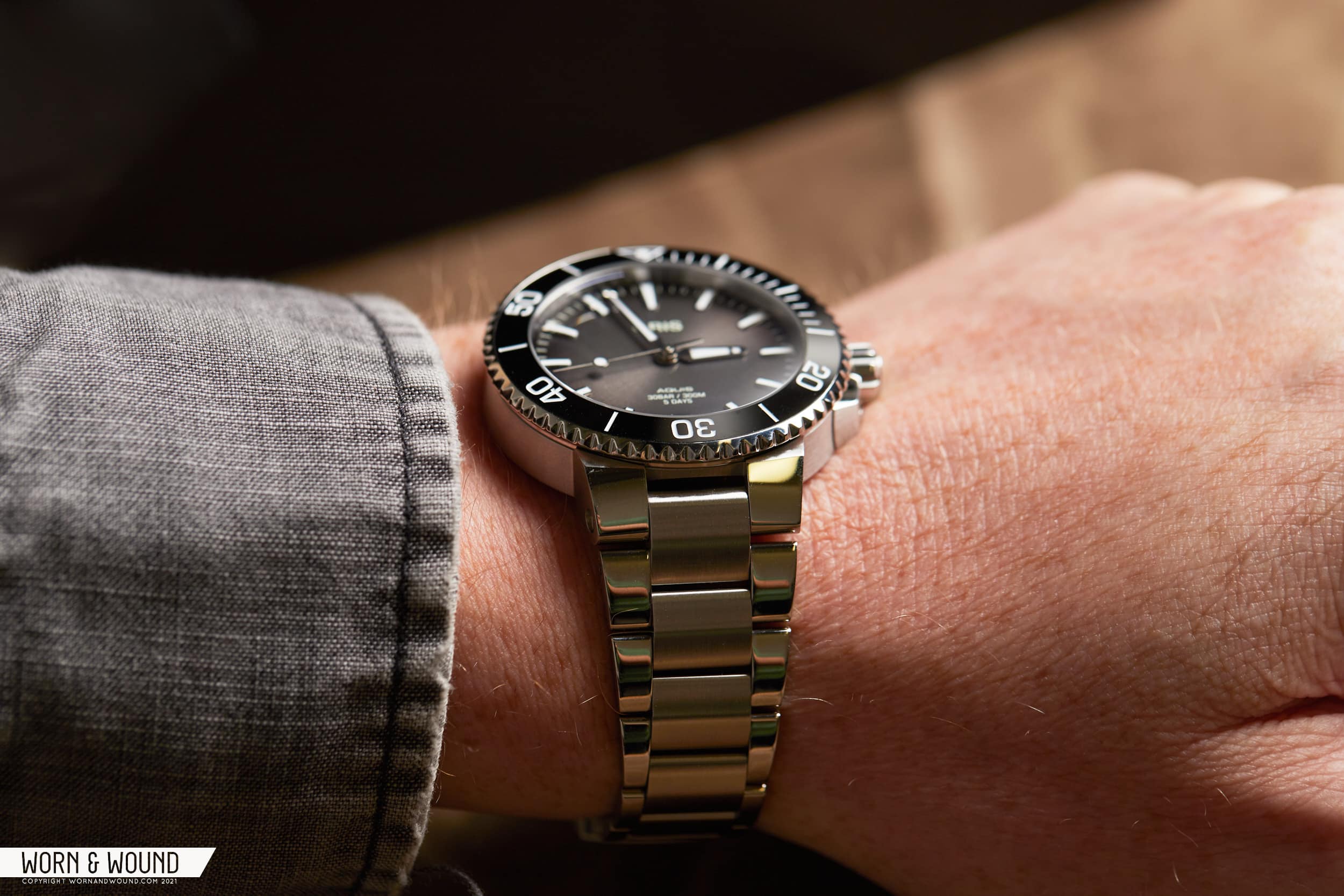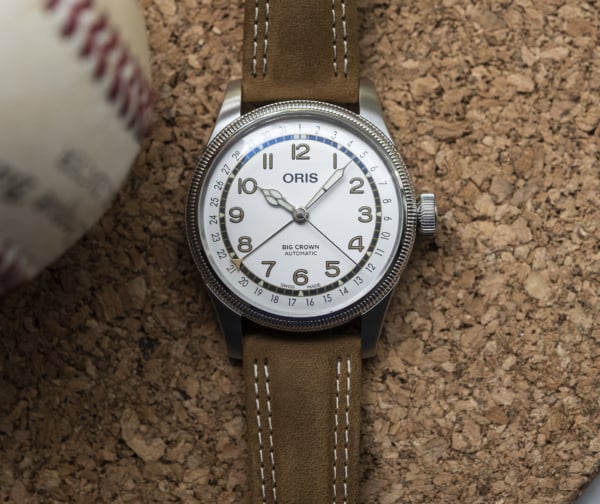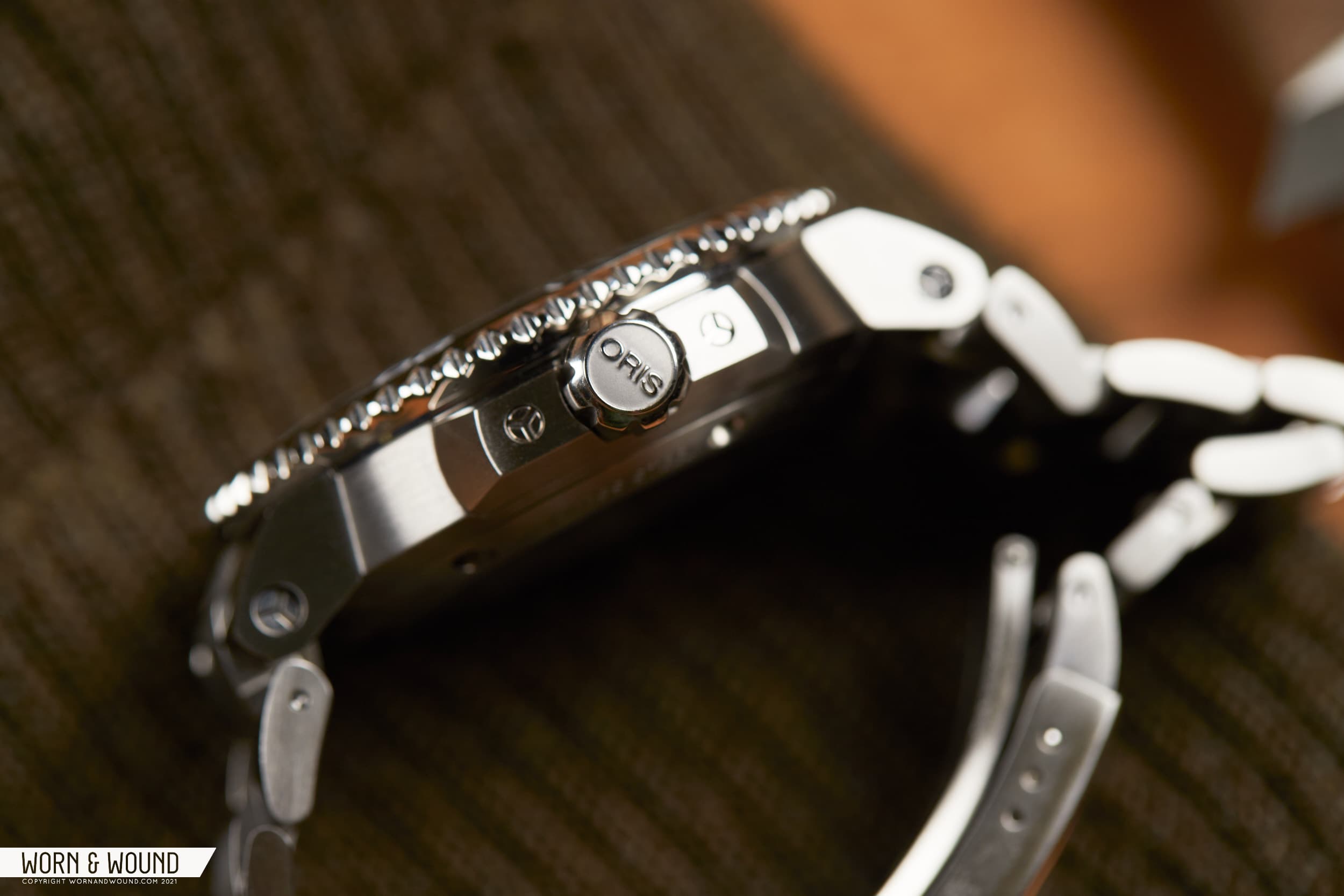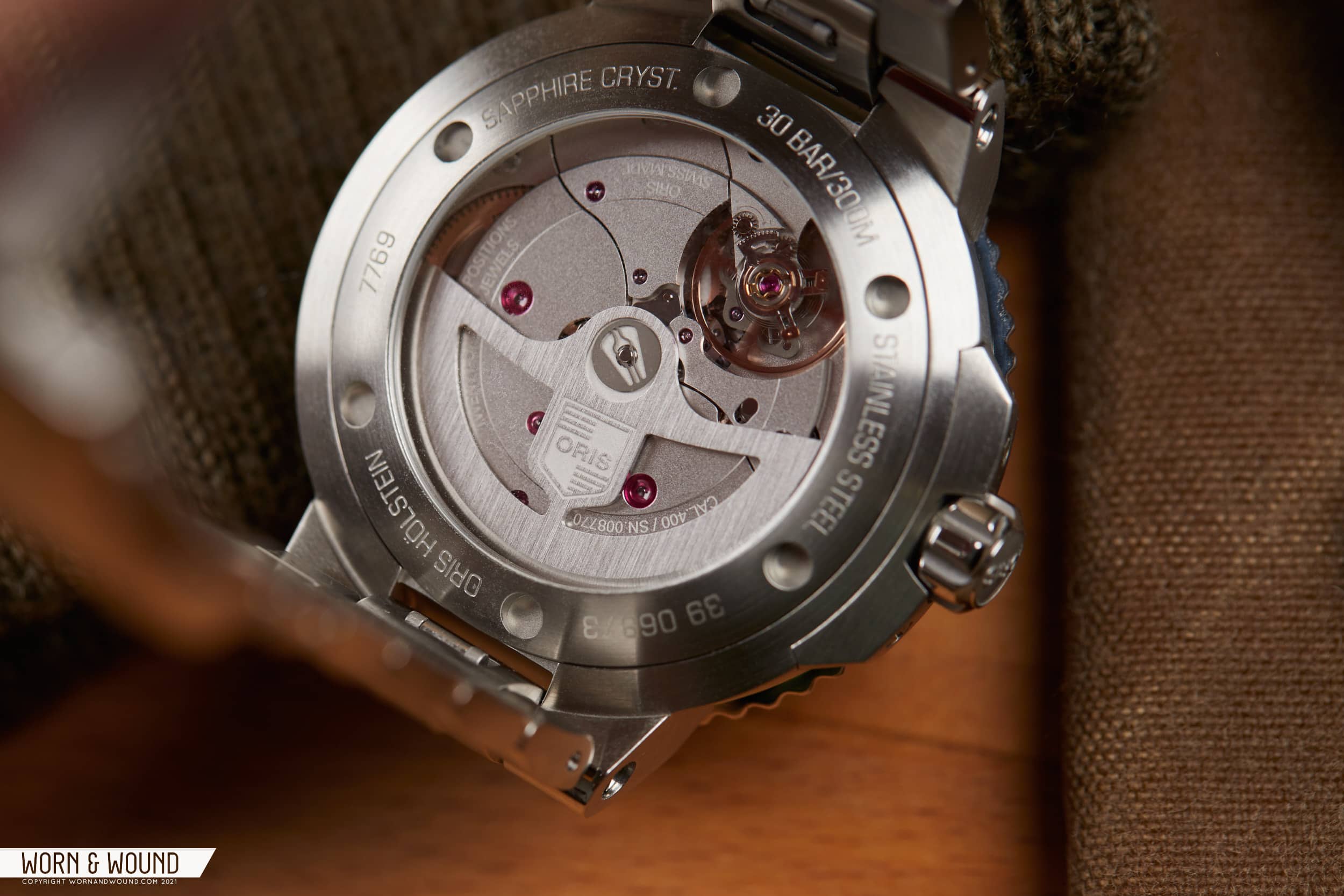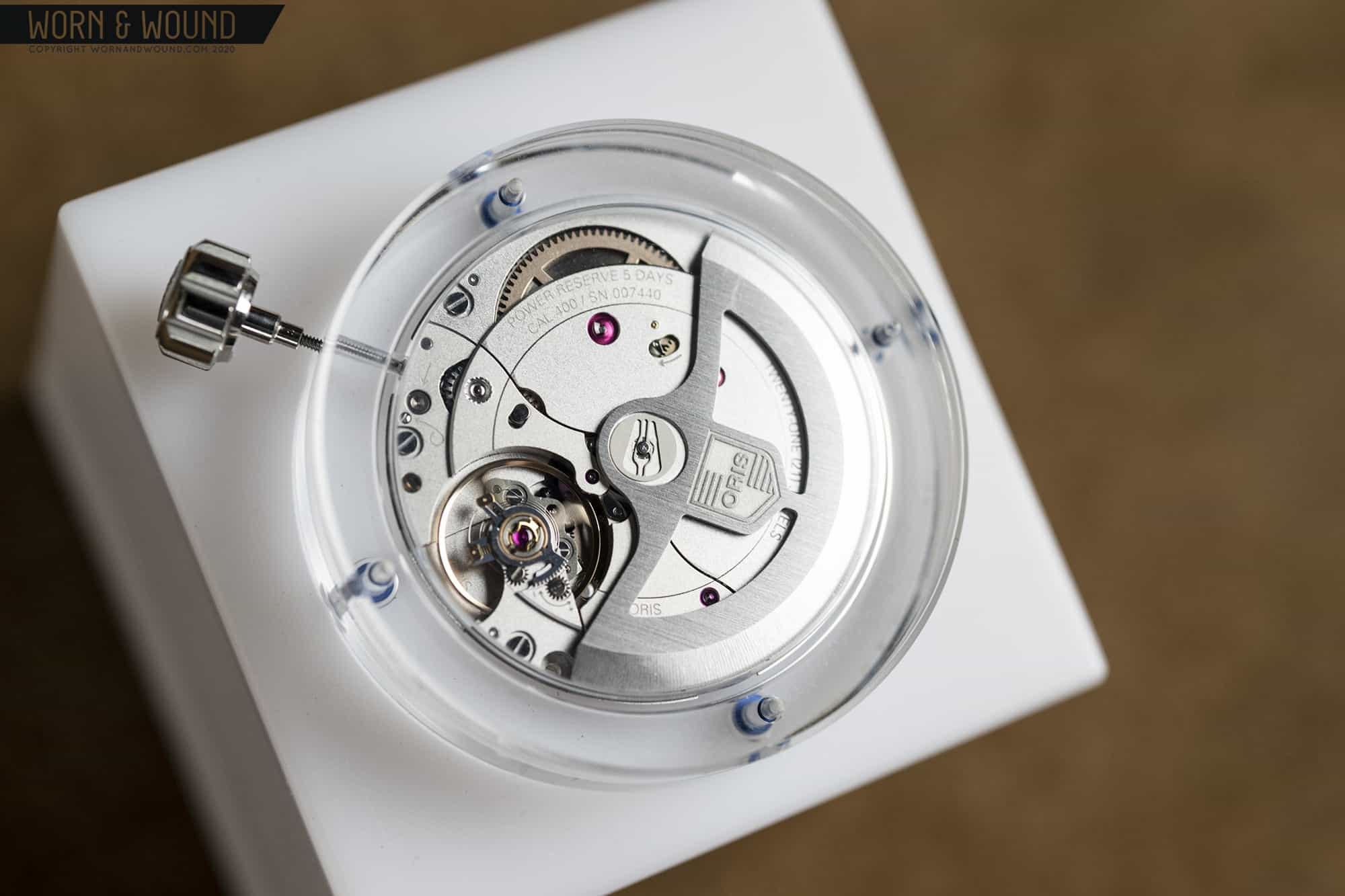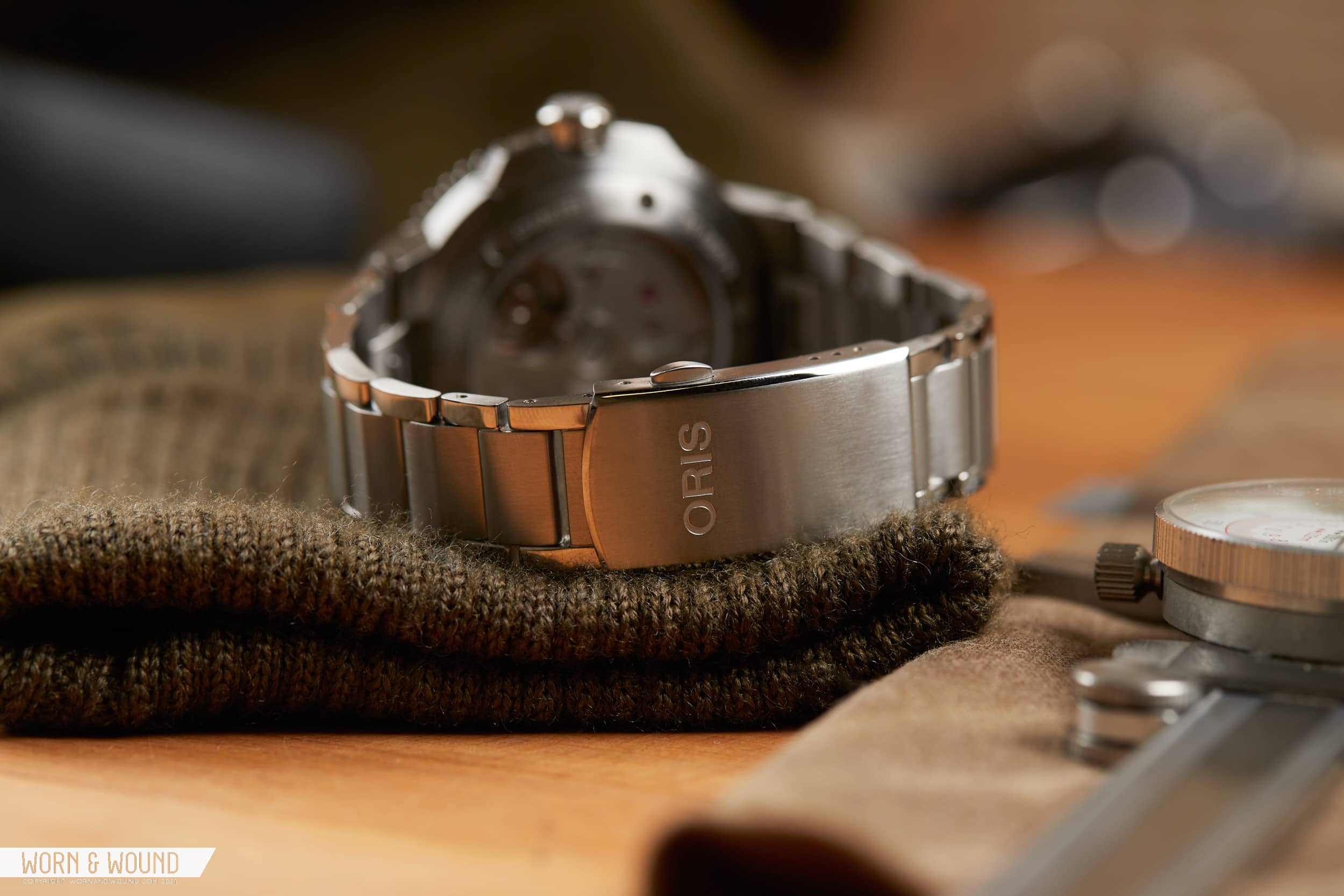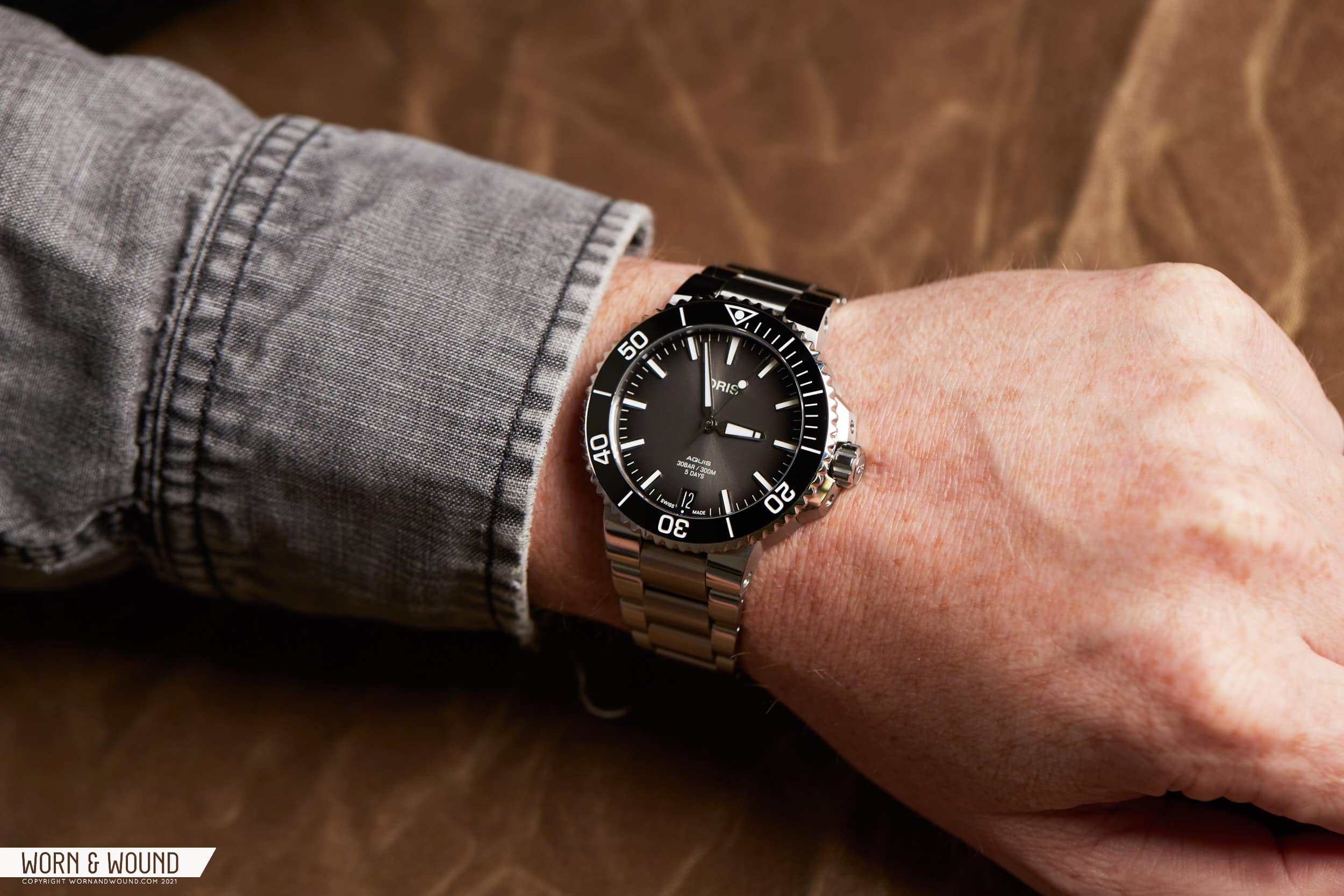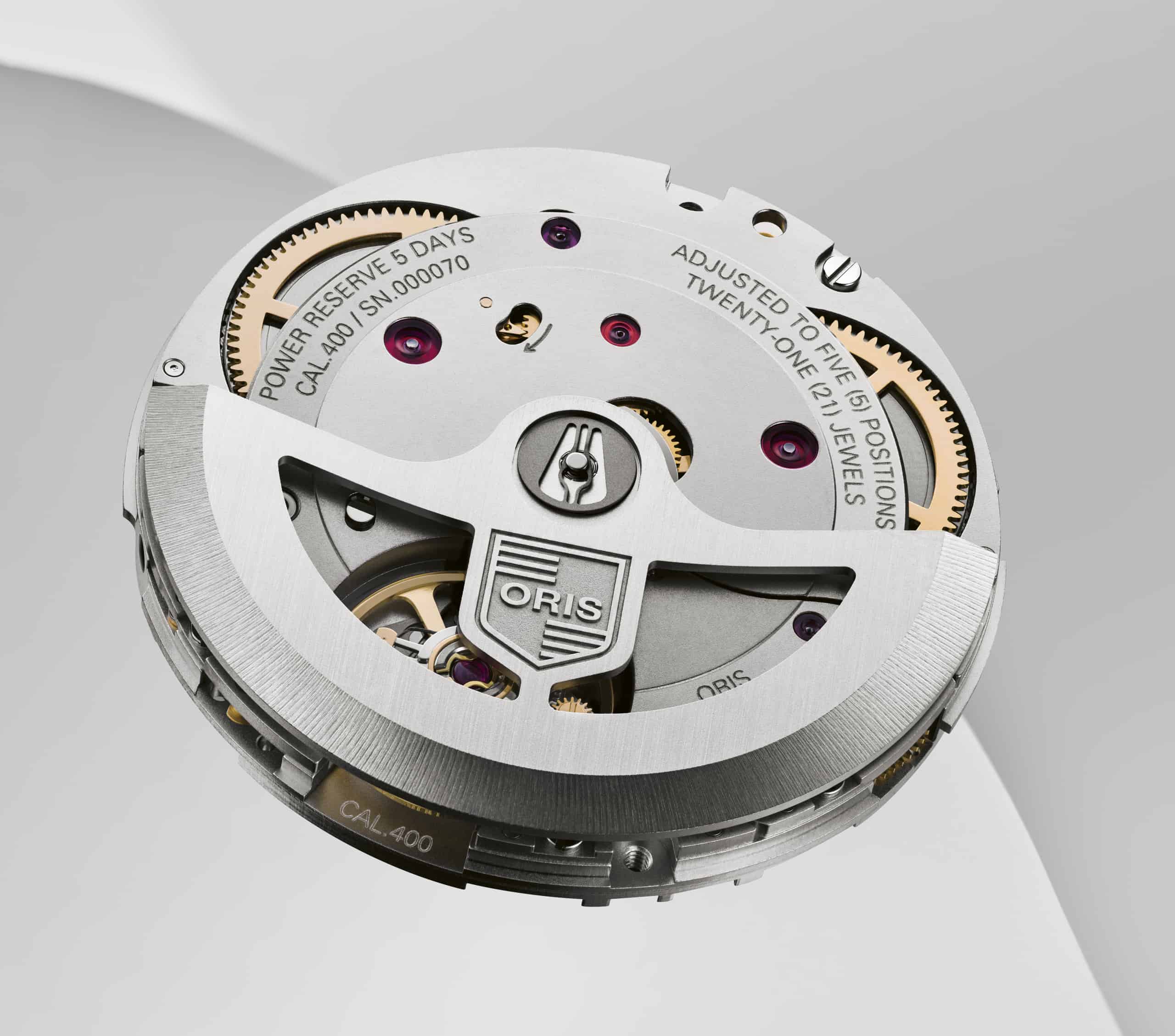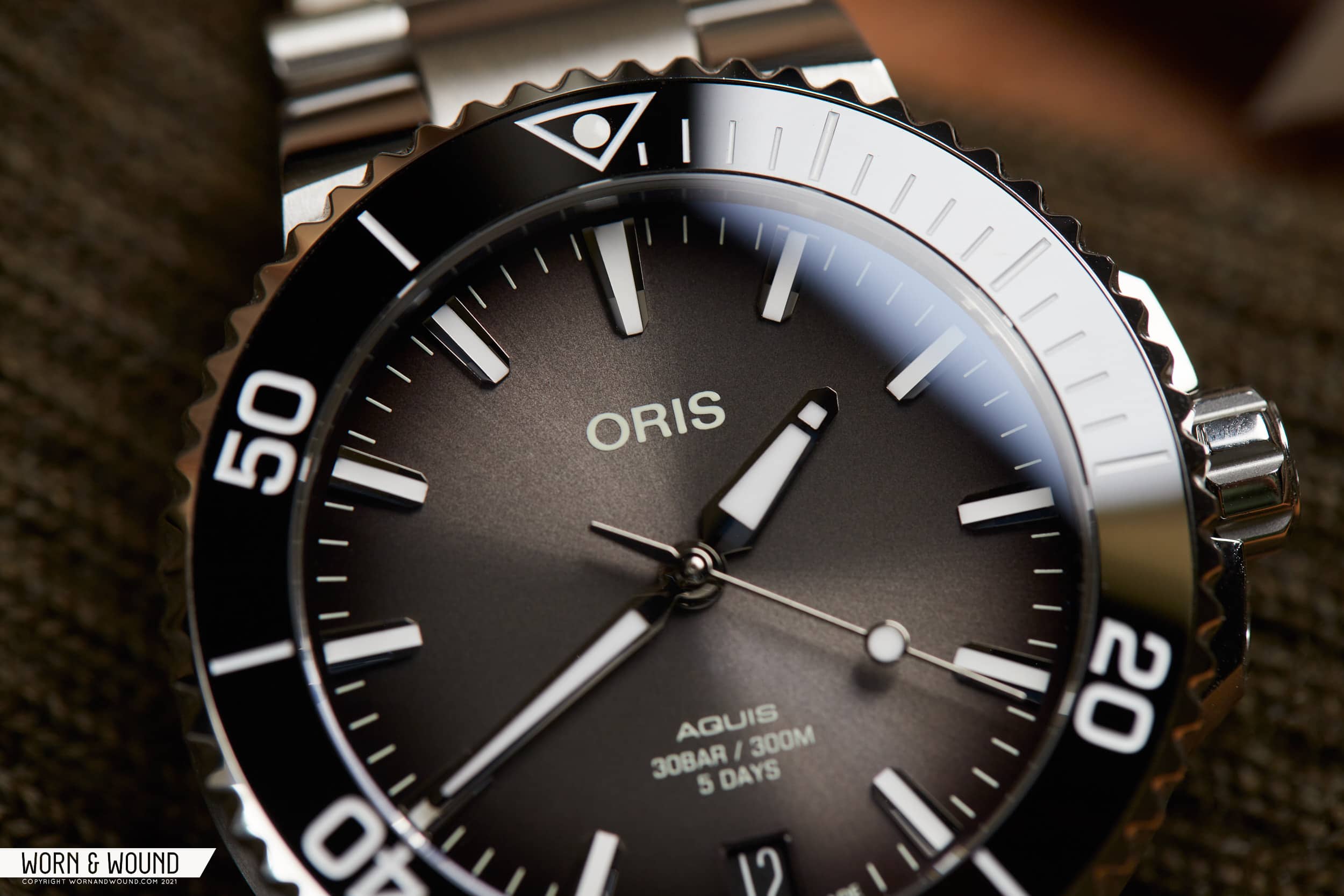When it comes to dive watches, I guess you could say I have a type. Chunky bezels, big hour markers, fat hands, and funky cases all appear heavily within my own watch box, from Seikos old and new to Rolex’s archetypal Submariner. The appeal of a simple, well done dive watch runs deep, and I suspect that’s why we see new contenders in this genre with regularity. A good diver, when done right, is also a great watch thanks to high legibility, a practical feature set, and a flexible design language that can span wardrobe styles with ease.
The Oris Aquis is, by every measure, a well executed, simple dive watch, yet it reads very differently from other classically styled divers like those referenced above. The Aquis is its own thing. I believe there are a few reasons for this, which I’ll get into, but first, let’s deal with the facts. Oris released an Aquis Date earlier this year, mercifully in their 41.5mm case, and within it have placed their new in-house automatic movement, the caliber 400 (which we introduced here). It might look the same, but this watch represents a new chapter for Oris’ most popular watch.









 Featured Videos
Featured Videos




